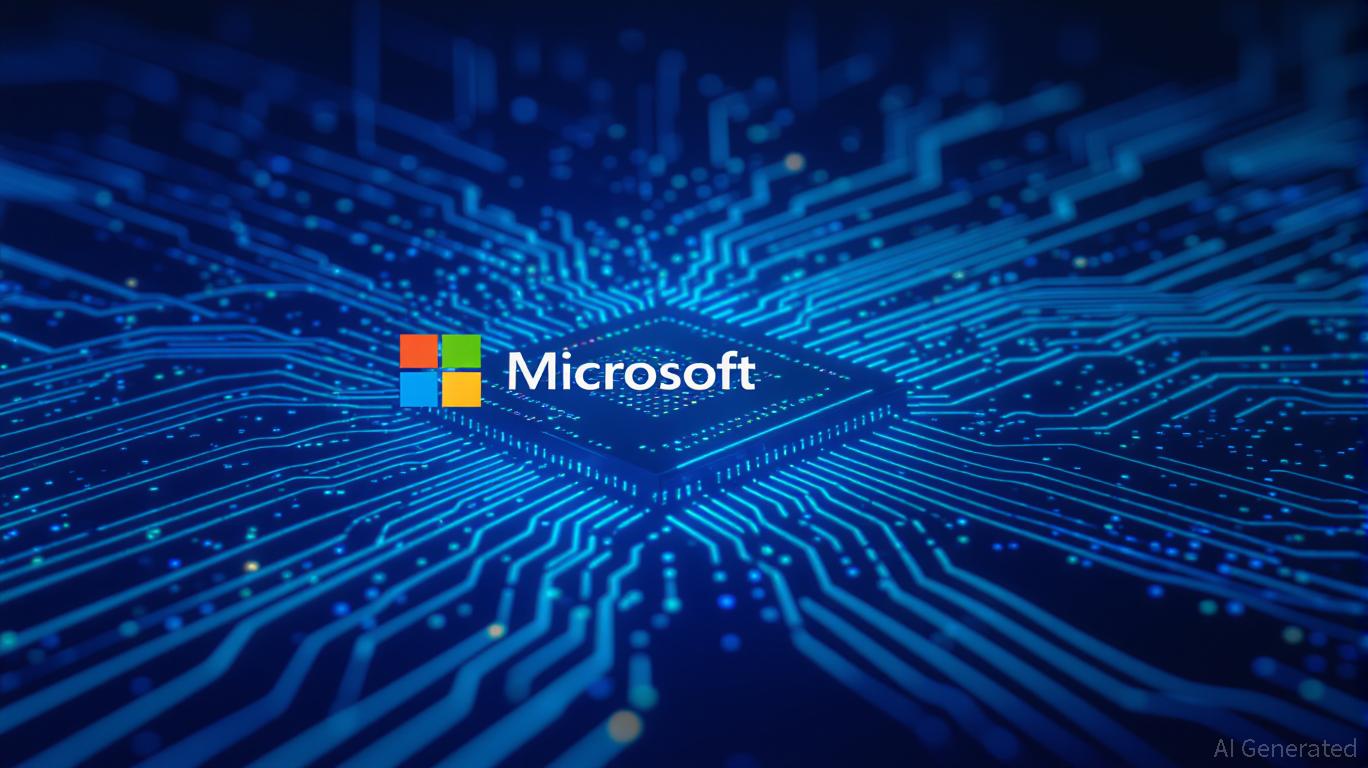News
Stay up to date on the latest crypto trends with our expert, in-depth coverage.

- Crypto marketing faces regulatory fragmentation, inefficient ad spend, and competition from tech giants, prompting demand for scalable solutions like Viant’s AI-driven white-label DSPs. - Viant’s AI tools automate 85% of ad spend and introduce "AI decisioning," targeting SMBs, while partnerships like Molson Coors boost CTV ad dominance. - Advocacy groups push for clearer crypto policies, and political shifts—like Trump’s "crypto-first" rhetoric—highlight tensions between innovation and regulatory safegua



- AMINA Bank AG, a Swiss crypto-focused bank, became the first international institution to secure a Hong Kong SFC license for institutional-grade crypto trading and custody services. - The license enables trading in 13 major cryptocurrencies and complies with SFC standards through SOC 1/2 Type 2-certified security frameworks, addressing prior market gaps in regulated offerings. - Hong Kong's crypto market saw 233% trading volume growth in H1 2025, with AMINA planning to expand into tokenized assets and st

- Internet Computer (ICP) surged 385% in late 2025, with $237B TVL driven by strategic blockchain-AI integration and institutional adoption. - Caffeine AI platform enables natural language dApp development, lowering barriers through reverse-gas token economics and cross-chain interoperability. - Partnerships with Microsoft Azure and Google Cloud address enterprise needs like data sovereignty, while Hong Kong regulatory support boosts institutional confidence. - ICP's 20–40% AI cost reduction and hybrid inf

- ICP token surged 30% in seven days, driven by DeFi revival and protocol upgrades like Caffeine AI. - Strategic partnerships with Microsoft and Google Cloud, plus energy-efficient 0.003 Wh transactions, strengthen enterprise adoption. - Deflationary token burns and hybrid cloud integrations support long-term viability despite SEC regulatory risks. - Sustainability hinges on balancing innovation momentum with regulatory navigation and maintaining technological edge.

- Aster launches Stage 4 "Harvest" airdrop and $10M "Double Harvest" trading competition to boost ecosystem growth. - Dual-reward system allows users to earn airdrop and competition tokens simultaneously through trading activity. - Platform develops on-chain order-book protocol for CEX-like speeds and expands gold/index perpetual contracts. - Global expansion includes Binance events and wallet integrations, while token utility expands to staking and governance. - Hybrid model combines decentralized infrast

- The Fed's 2025 shift to easing policy, ending QT and cutting rates, injected liquidity, boosting Solana and other cryptos as risk assets. - Historical parallels show Fed liquidity expansions correlate with crypto rallies, though Solana's December 2025 price data remains unclear. - Cryptocurrencies now exhibit macroeconomic sensitivity, with Fed easing potentially increasing demand for high-volatility assets like Solana. - Investors must balance Fed-driven liquidity benefits against crypto's volatility an
- 02:43Bio Protocol launches BioXP Season 2, introducing multiplier mechanism and ecosystem airdropOn November 20, according to a Bio Protocol announcement, BioXP Season 2 has been launched. Users need to stake BIO to generate veBIO in order to obtain XP from staking ecosystem tokens and qualify for airdrops. The new mechanism includes: 1) veBIO level multiplier, with up to 10x XP rewards; 2) XP bonus for staking new tokens within the first 60 days; 3) veBIO holders will automatically receive new ecosystem token airdrops. All old BioXP will expire after the second ignition sale. All old BioXP will expire after the second ignition sale.
- 02:4221Shares Solana ETF listed, US Solana spot ETF sees single-day net inflow of $55.61 millionChainCatcher News, 21Shares Solana ETF (ticker TSOL) has been officially listed on CBOE after receiving SEC approval. Currently, there are a total of 6 Solana spot ETFs trading in the US market. According to SoSoValue data, the total net inflow into Solana spot ETFs is $55,610,000. Among them, TSOL had no net inflow on its first day of listing, with a trading volume of $400,000 and a total net asset value of $104 million. The Bitwise BSOL ETF recorded the highest single-day net inflow of $35,870,000, with a historical total net inflow reaching $424,000,000. As of press time, the total net asset value of Solana spot ETFs is $715,000,000, with a Solana net asset ratio of 0.97%, and the historical cumulative net inflow has reached $476,000,000. The 21Shares Solana ETF supports cash or in-kind subscriptions and redemptions, has a management fee rate of 0.21%, supports additional yield through Solana staking, and the sponsor receives a 10% share of staking rewards after deducting staking service fees.
- 02:42Preview: Tonight's showdown with unemployment and non-farm payroll data will be the key catalyst for future market trendsChainCatcher News, the non-farm payroll data for September, originally scheduled to be released on October 3, was delayed until this evening due to the U.S. government shutdown. Before the shutdown, the U.S. Bureau of Labor Statistics had already completed the collection and compilation of the data, so there will not be any systemic bias in the data itself, and the impact on data quality is limited. At the previous October FOMC meeting, the Federal Reserve further cut interest rates despite insufficient data, but did not commit to a subsequent rate cut path. At that time, Powell stated that a December rate cut was not "a foregone conclusion" and that the October rate cut was a "risk management cut," while also hinting at serious internal disagreements within the Federal Reserve. As the first important economic data released after the end of the U.S. government shutdown (even though it is long-delayed data), if it provides new signals, it could become a key catalyst for the next market trend. Important macroeconomic data to be released tonight at 9:30 PM (GMT+8) include: U.S. September unemployment rate, U.S. September non-farm payrolls (seasonally adjusted), and U.S. initial jobless claims for the week ending November 15.